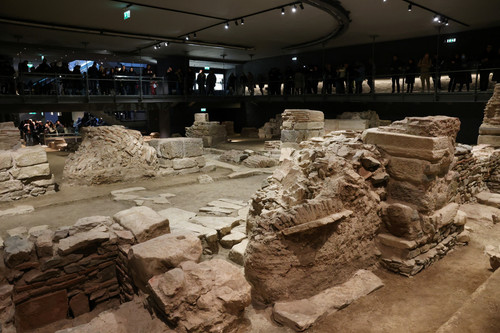
Thessalonike, Greece's second-largest city, has transformed its long-awaited metro system into a captivating blend of modern transportation and archaeological wonder. The new subway, which officially opened on November 30, 2024, offers passengers a unique journey through time as they travel beneath the city's streets.
Key Features of the Metro
- State-of-the-Art Technology: The metro features driverless trains and platform screen doors, ensuring a safe and efficient travel experience.
- Archaeological Exhibits: The 9.6-kilometer inaugural line showcases thousands of ancient artifacts unearthed during its construction, turning the metro stations into impromptu museums.
- Historical Significance: Over 300,000 archaeological finds are on display throughout the 13 underground stations, providing a glimpse into Thessalonike's rich past.
Highlighted Stations
- Venizelou Station: This station is home to a section of a marble-paved Roman thoroughfare, preserved in situ, offering a glimpse into ancient urban planning.
- Other Stations: Various stations exhibit a diverse array of artifacts spanning centuries, including ancient Greek burial sites, Byzantine mosaics, and remnants of water and drainage systems from different eras.
Impact and Purpose
The project, which began in earnest in 2003, faced numerous challenges and delays due to the vast number of archaeological discoveries. However, these setbacks ultimately resulted in a remarkable fusion of past and present, offering residents and tourists alike an unparalleled opportunity to connect with Thessalonike's rich heritage while utilizing modern urban transportation.
This innovative metro system not only aims to reduce daily car traffic by an estimated 57,000 vehicles but also serves as a testament to Thessalonike's commitment to preserving its cultural legacy while embracing technological progress. As passengers traverse the city, they are treated to a subterranean journey through history, making their daily commute an educational and awe-inspiring experience.
Note: The name "Thessalonike" is used here as a phonetic simplification familiar in modern Greek, aligning with the transliteration guidelines provided. Historically, "Thessalonike" is the classical form of the city's name, derived from the ancient Greek Θεσσαλονίκη (Thessalonikē), while "Thessaloniki" is the more commonly used modern spelling.